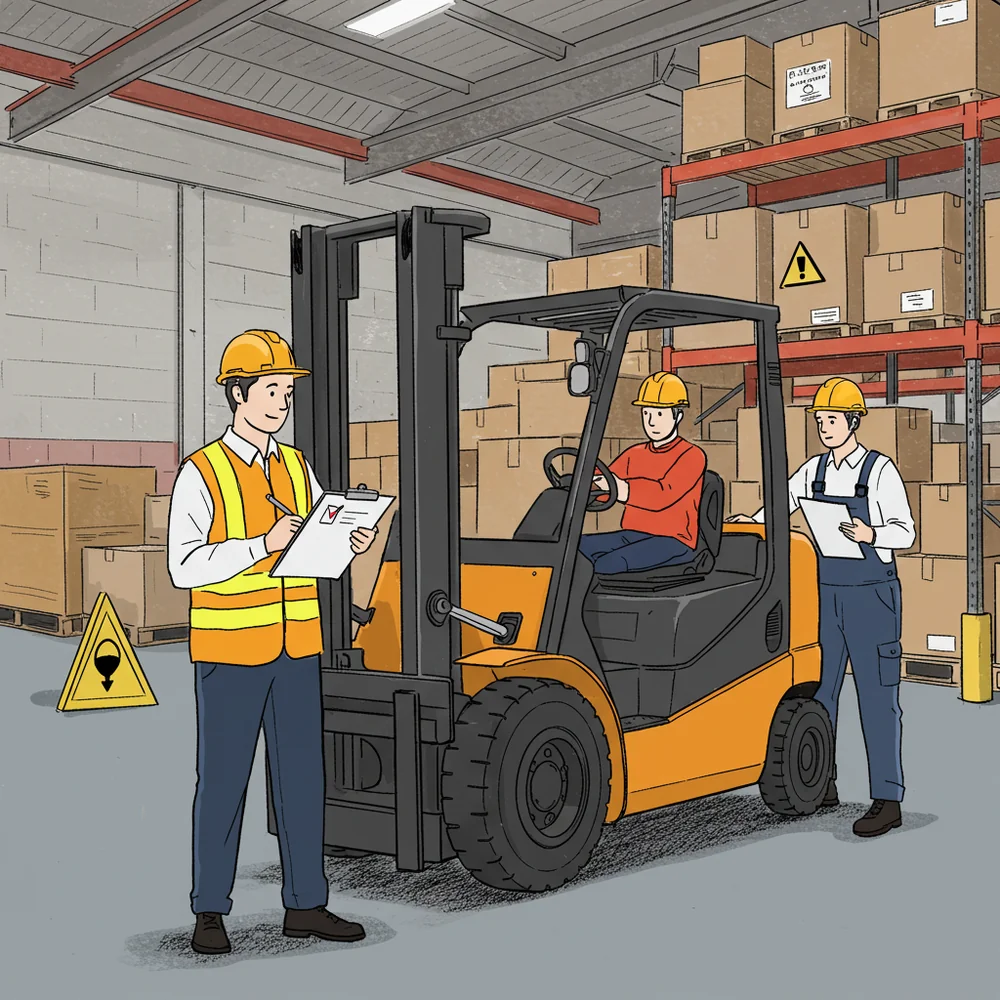
Forklift Inspection Checklist | Daily Safety Guide
Forklift Inspection Checklist
A forklift inspection checklist is vital for maintaining a safe and efficient workplace. It helps operators verify that equipment is in good working condition before each use. By identifying potential issues early, it prevents accidents and reduces costly downtime. Regular checks also support compliance with safety regulations and standards. This checklist provides a simple, reliable way to keep forklifts operating safely every day.
1. Visual / Exterior Inspection
2. Forks, Carriage & Load Handling Assembly
3. Hydraulic System
4. Brakes & Steering
5. Tires / Wheels / Axles
6. Power / Fuel / Battery System
7. Electrical / Controls / Instruments
8. Cab / Operator Compartment / Safety Devices
9. Operational / Performance Check (Engine Running / Powered)
10. Documentation / Safety / Post-Inspection
Overall Progress
0% complete
Checklist Progress
0% complete - Ready to download!
Related Checklists
Explore more checklists in the Inspection Checklists category
Fire Extinguisher Inspection Checklist: Stay Safe & Complian
Comprehensive fire extinguisher inspection checklist covering location, physical condition, pressure, safety mechanisms, and maintenance requirements.
Pre-Trip Safety Inspection Checklist to Prevent Bre
Comprehensive pre-trip vehicle inspection checklist covering safety, mechanical, and compliance requirements for commercial vehicles.
Apartment Inspection Checklist: Safety, Utilities & Living Areas
Comprehensive apartment inspection covering entryways, electrical, plumbing, safety, and all living areas for rental properties.
Virginia State Car Inspection Checklist
Complete Virginia vehicle inspection checklist covering brakes, lights, tires, steering, mirrors, exhaust, and safety restraints for certification.
Housing Inspection Checklist for Home Safety
Detailed housing inspection checklist covering structure, systems, and safety to ensure property quality and habitability.
Popular Categories
Most downloaded checklist categories
Audit Checklists
Ensure accuracy and compliance with audit checklists for business, finance, and safety. Organized tools for efficient auditing.
Assessment Checklists
Streamline evaluations with detailed assessment checklists. Ensure accuracy, consistency, and efficiency in academic, workplace, and project reviews.
Car Checklists
Find essential car checklists for maintenance, safety, road trips, and inspections. Stay prepared and keep your vehicle in top shape.
Safety Checklists
Stay safe with checklists for workplace, home, and emergency preparedness. Reduce risks and stay ready for any situation.
Home Checklists
Explore home checklists for cleaning, organization, safety, and maintenance. Keep your home efficient, safe, and clutter-free.
Wedding Checklists
Plan your big day with wedding checklists covering planning, budget, guests, and timeline. Stay organized from start to finish.



